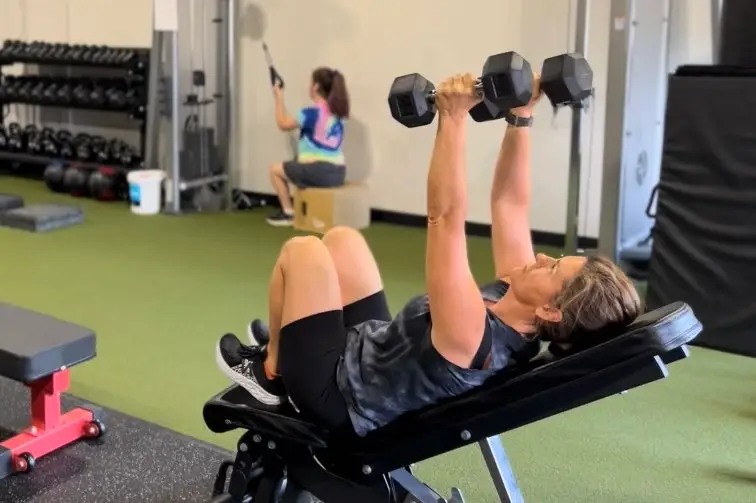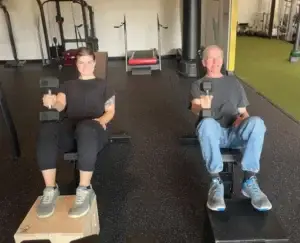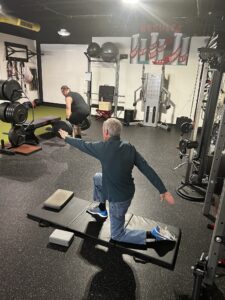💊 The Problem With How We Treat Pain
Pain is a personal experience influenced by many factors, yet it’s often treated as a mechanical issue—something is broken, so we must fix it.
When pain strikes, the instinct is to seek a quick solution:
✔️ A pill
✔️ A chiropractic adjustment
✔️ A massage or treatment session
This approach is so common that the pain management industry generates more revenue than heart disease, cancer, and diabetes combined.
Why? Because pain makes us desperate for relief. This often leads to a cycle of dependency on passive treatments like adjustments, massages, and other temporary fixes. While these treatments can provide relief, they shouldn’t be the only strategy for managing chronic pain.
🔗 Pain and Lifestyle: A Deeper Connection
Pain isn’t just something that happens to us—it’s influenced by how we live. If we want to overcome chronic pain, we need to approach it like other health conditions such as type 2 diabetes or obesity.
Take diabetes, for example:
💡 A healthy diet helps, but if someone doesn’t move their body, blood sugar issues persist.
💡 With obesity, physical activity is a non-negotiable part of sustainable weight management.
The same holds true for pain. No pill, manual therapy, or passive treatment can undo the effects of a sedentary lifestyle.
That doesn’t mean movement alone will eliminate pain—other factors like stress, sleep, nutrition, and mental health also play a role. But without movement, pain management is incomplete.
📖 A Client’s Story: The Aha Moment
One of my longtime clients was always in pain. Every time we tried to progress her exercises, she would tweak something—her back, knee, or shoulder. It felt like we were stuck in a cycle, and I had accepted that progress might never happen for her.
Then, something changed.
Her three-year-old grandchild came to stay with her for a couple of weeks. If you’ve been around a toddler, you know they don’t sit still. For two weeks, my client was constantly moving—playing, chasing, supervising.
The results were incredible.
For the first time ever, she made real progress. Her pain decreased, and she hit milestones I never thought possible. When I asked her about it, she simply said:
🗣️ “Lucy, it’s nonstop moving!”
That was the moment it clicked.
There was nothing we could do in the gym for 2-3 hours a week—and no treatment she could receive—that would undo the effects of a sedentary life. It wasn’t until her daily routine became more active that her pain truly improved.
After that, I started seeing chronic pain in the same way as heart disease or diabetes. Just like these conditions require lifestyle changes, so does overcoming persistent pain.
🚶♂️ Starting Where You Are
If you’re already going to the gym, try taking a short walk on the days you don’t work out.
If you’re in so much pain that even the idea of moving feels overwhelming, that’s okay. Start exactly where you are.
🔹 For one person, that might mean walking to the mailbox and back.
🔹 For someone else, even that might be too much—and that’s okay too.
Over the past 14 years, I’ve worked with people who felt stuck. Some could only do two simple, gentle exercises at first. But those two movements were enough.
Why? Because they were consistent.
Those two exercises turned into four. Four became more. Over time, they built strength, moved more freely, and achieved things they never thought possible.
The key is to start small and stay consistent.
🤔 Where Can You Get Help?
If this article resonated with you, you might be wondering, Where do I start? The answer depends on your unique situation.
🏥 A Good Physical Therapist
A great physical therapist doesn’t just treat pain—they help you build strength and prevent it from coming back.
We’re fortunate to know some excellent physical therapists, like our friends at MoveSmart, who follow this approach. They understand that while treatments like adjustments and manual therapy have their place, long-term results come from moving better, getting stronger, and staying active.
The challenge? Not all physical therapists work this way. Many rely solely on passive treatments, which might provide short-term relief but won’t build the resilience you need for long-term success.
💪 A Skilled Personal Trainer
A knowledgeable personal trainer who understands pain can be just as effective—sometimes even more so—than a physical therapist.
A great trainer can help you go from barely being able to move to living an active, pain-free life. But just like with physical therapists, not all trainers have the expertise to work with chronic pain.
Which One Is Right for You?
It depends.
✔️ Some people need a physical therapist first.
✔️ Others benefit more from a personal trainer.
✔️ In many cases, a combination of both is ideal.
No matter which path you take, look for professionals with real success stories from people like you. Read reviews, check testimonials, and find someone who understands your goals.
A good professional—whether a trainer or a therapist—will also know when medical clearance is necessary before starting a program.
📅 Ready to Take the First Step?
If you’re ready to take control of your pain and start feeling better, we’d love to help.
📅 Book a Free Consultation and let’s create a movement plan that meets you where you are.
Text “FREE CONSULT” to 859-251-2707



